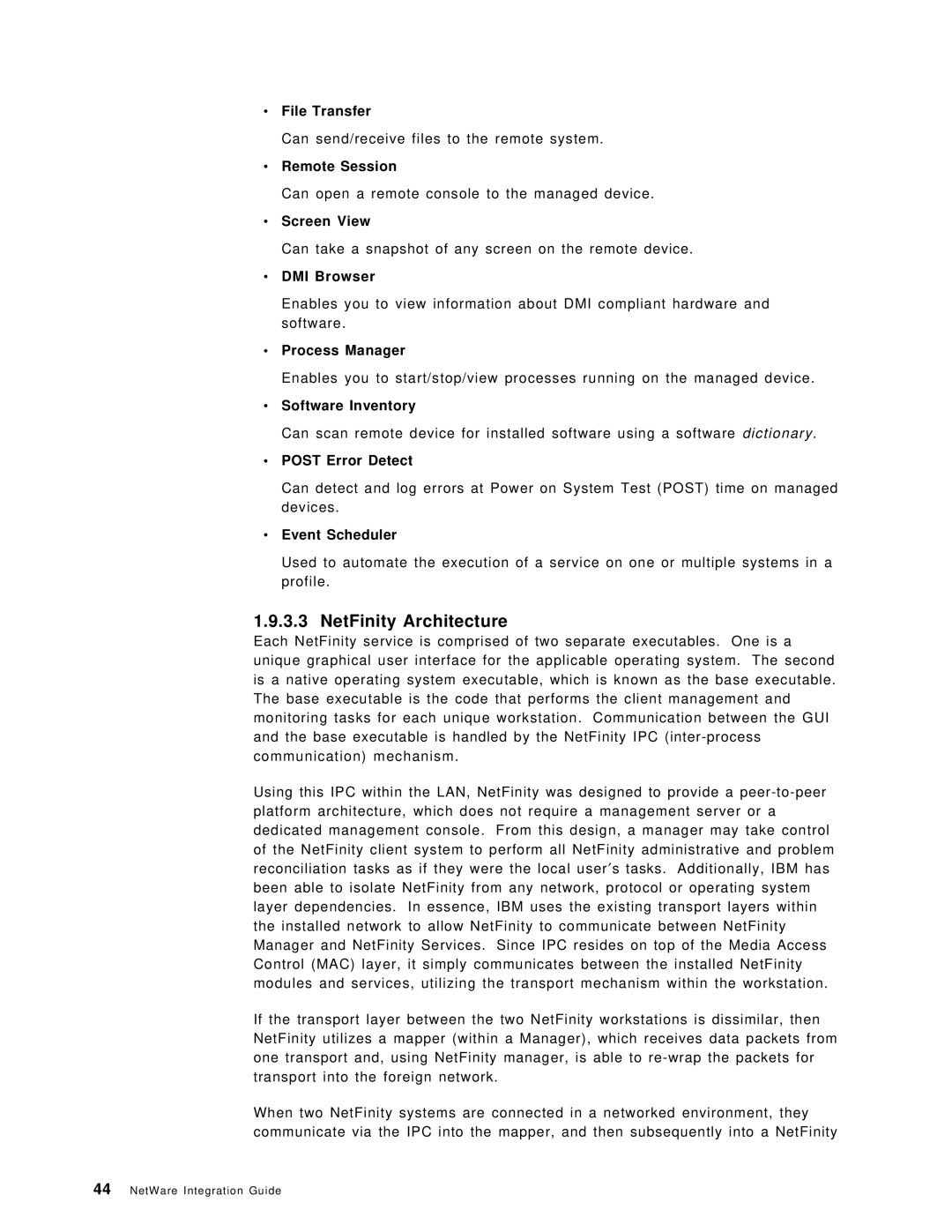∙
∙
∙
∙
File Transfer
Can send/receive files to the remote system.
Remote Session
Can open a remote console to the managed device.
Screen View
Can take a snapshot of any screen on the remote device.
DMI Browser
∙
∙
∙
Enables you to view information about DMI compliant hardware and software.
Process Manager
Enables you to start/stop/view processes running on the managed device.
Software Inventory
Can scan remote device for installed software using a software dictionary.
POST Error Detect
Can detect and log errors at Power on System Test (POST) time on managed devices.
∙Event Scheduler
Used to automate the execution of a service on one or multiple systems in a profile.
1.9.3.3 NetFinity Architecture
Each NetFinity service is comprised of two separate executables. One is a unique graphical user interface for the applicable operating system. The second is a native operating system executable, which is known as the base executable. The base executable is the code that performs the client management and monitoring tasks for each unique workstation. Communication between the GUI and the base executable is handled by the NetFinity IPC
Using this IPC within the LAN, NetFinity was designed to provide a
If the transport layer between the two NetFinity workstations is dissimilar, then NetFinity utilizes a mapper (within a Manager), which receives data packets from one transport and, using NetFinity manager, is able to
When two NetFinity systems are connected in a networked environment, they communicate via the IPC into the mapper, and then subsequently into a NetFinity
44NetWare Integration Guide
